BALLOON/SKY LANTERN RELEASE BAN
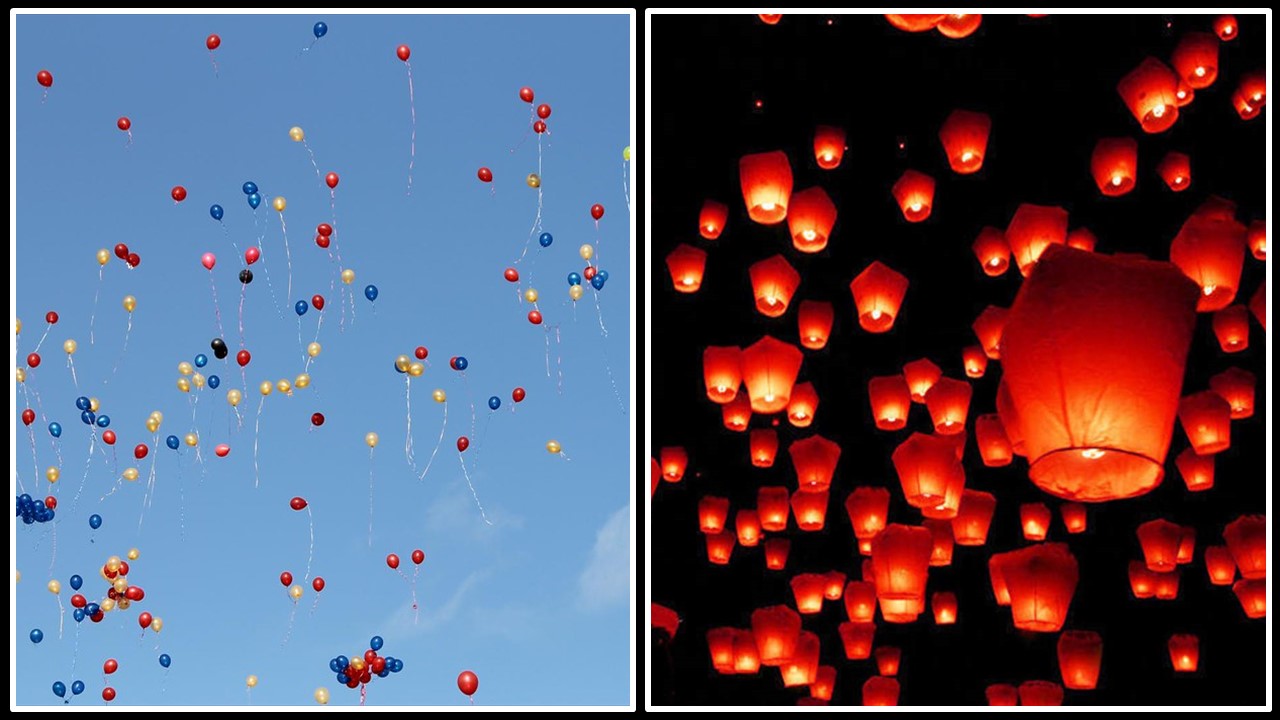 We are thrilled to report a huge conservation win for birds and other wildlife in Northeast Florida! At the Jacksonville City Council meeting on October 25, council members voted to approve a new ordinance that prohibits the release of balloons or sky lanterns in Duval County. We have been working closely with Never Endanger Sea Turtles since last spring to encourage the City of Jacksonville to join other First Coast communities like St. Augustine, Neptune Beach, Atlantic Beach, and Fernandina Beach in enacting such a ban, and we applaud council member Rory Diamond for sponsoring this legislation. We are thrilled to report a huge conservation win for birds and other wildlife in Northeast Florida! At the Jacksonville City Council meeting on October 25, council members voted to approve a new ordinance that prohibits the release of balloons or sky lanterns in Duval County. We have been working closely with Never Endanger Sea Turtles since last spring to encourage the City of Jacksonville to join other First Coast communities like St. Augustine, Neptune Beach, Atlantic Beach, and Fernandina Beach in enacting such a ban, and we applaud council member Rory Diamond for sponsoring this legislation.
Once released, balloons and sky lanterns pose a deadly threat to birds, sea turtles and other wildlife. These items don’t just “go away” when they are floating up into the sky; they will eventually come down somewhere and may kill or injure innocent wildlife. Even one balloon landing in a tree can cause a bird to become entangled and die a horrible death from strangulation or starvation.
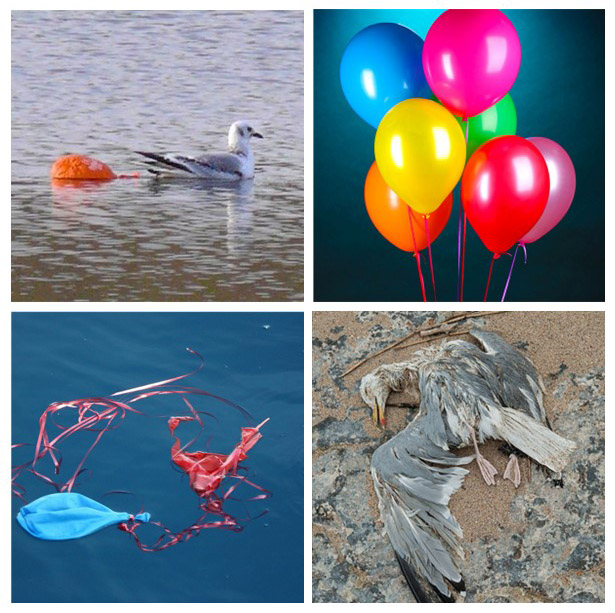 And it’s not just entanglement. Seabirds often ingest plastic items thinking they are food, and a 2019 study published in the journal Nature Scientific Reports found that ingested balloons are 32 times more likely to kill seabirds than hard plastic pieces that they’ve eaten. And it’s not just entanglement. Seabirds often ingest plastic items thinking they are food, and a 2019 study published in the journal Nature Scientific Reports found that ingested balloons are 32 times more likely to kill seabirds than hard plastic pieces that they’ve eaten.
Sky lanterns present additional hazards, as they contain open flames and can result in fires that could destroy wildlife habitats and threaten human communities as well. Even if they don’t cause a fire, birds and other wildlife can get entangled in their fallen remains.
Unfortunately, Florida law still allows the release of up to 9 balloons filled with lighter-than-air gas within a 24-hour period, but this local ordinance will reduce the chances of that happening here in Northeast Florida. The new ban is part of the City’s litter ordinance, and anyone releasing any number of balloons or sky lanterns in Jacksonville will face a $50 penalty.
Your chapter leaders are working to spread the word about this new ordinance so that community members are aware of it and understand the reasoning behind it. This is just one way we are trying to reduce some of the perils that birds and other wildlife face as they go about the dangerous business of survival.
LIGHTS OUT NORTHEAST FLORIDA UPDATE
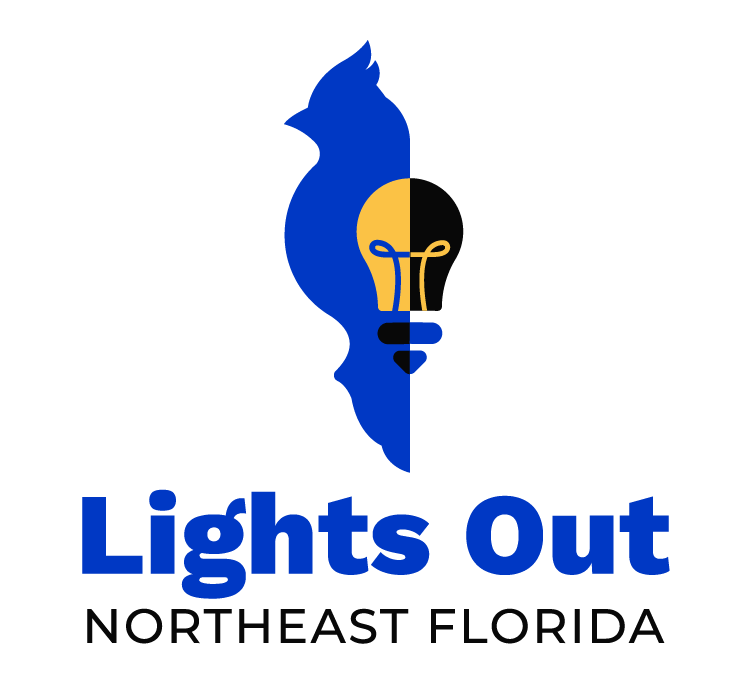 Our Lights Out Northeast Florida (LONF) initiative in partnership with the Jacksonville Zoo & Gardens and St. Johns County Audubon Society is winding down for the fall migration season. Volunteers have been hitting the streets of downtown Jacksonville since mid-September to count birds that have been killed or injured by collisions with buildings and windows, and the weekly surveys will continue through mid-November. Our Lights Out Northeast Florida (LONF) initiative in partnership with the Jacksonville Zoo & Gardens and St. Johns County Audubon Society is winding down for the fall migration season. Volunteers have been hitting the streets of downtown Jacksonville since mid-September to count birds that have been killed or injured by collisions with buildings and windows, and the weekly surveys will continue through mid-November.
More than 80% of migrating birds travel at night under cover of darkness using the moon and stars as their guiding lights. However, bright artificial lights on buildings can draw birds toward these lights and off their natural migration paths. The birds will often aimlessly circle a brightly lit building until they collide with it or collapse from exhaustion. By turning out the lights, we can remove a major source of mortality from bird populations already threatened by predators, bad weather, habitat loss due to development, food availability disruptions due to climate change, and more.
 The LONF project aims to encourage downtown business owners and building managers to reduce and turn off artificial lighting at night to ensure birds safe passage during their migration. So far this fall, LONF volunteers have tallied 150 dead birds and 25 birds injured or stunned by building collisions in the downtown Jacksonville area, and we hope that by reducing downtown lighting at night, fewer birds will be drawn into the downtown area and bird deaths and injuries will be significantly decreased in the future. The LONF project aims to encourage downtown business owners and building managers to reduce and turn off artificial lighting at night to ensure birds safe passage during their migration. So far this fall, LONF volunteers have tallied 150 dead birds and 25 birds injured or stunned by building collisions in the downtown Jacksonville area, and we hope that by reducing downtown lighting at night, fewer birds will be drawn into the downtown area and bird deaths and injuries will be significantly decreased in the future.
But it’s not just tall buildings that can present a hazard to migrating birds; the American Bird Conservancy estimates that almost half of the window collisions that kill nearly 1 billion birds each year happen at residences. Turning off the lights at your home between 11 pm and 6 am during spring and fall migration seasons (roughly March 15-May 15 and September 15-November 15 in Northeast Florida) can help birds survive as well. If outdoor lights need to stay on for security reasons, you can install motion sensors so the lights only come on when needed, and all outdoor lighting should be shaded and pointing downward instead of up into the sky.
 In addition, you can help save birds’ lives all year long by making your windows “bird-safe” with one of the many bird-safe window treatment options available. The problem? Birds can’t “see” glass like we do – they see the reflection of the sky in the window and will often fly right at it, not realizing it isn’t open sky, resulting in a collision that can lead to serious injury or even death. The key to preventing this is making your windows visible to birds so they will avoid them, and research has shown that there are several effective ways to do this: In addition, you can help save birds’ lives all year long by making your windows “bird-safe” with one of the many bird-safe window treatment options available. The problem? Birds can’t “see” glass like we do – they see the reflection of the sky in the window and will often fly right at it, not realizing it isn’t open sky, resulting in a collision that can lead to serious injury or even death. The key to preventing this is making your windows visible to birds so they will avoid them, and research has shown that there are several effective ways to do this:
- Screens installed on the outside of windows will enable birds to see them as an obstacle, reducing the chance that they will collide with them.
- Where screens are not feasible, you can apply visible patterns to the outside of the glass (not the inside, as this won’t break up the reflections on the outside) with light-colored stripes, shapes, or dots at least ¼” in size placed no further than 2” apart. According to the American Bird Conservancy, 2” spacing (vertically, horizontally, and diagonally) is enough to make your windows visible to birds. (See above image for examples.)
- Or, you can install a solution like Acopian Birdsavers to the outside of your windows, which you can either purchase already made, or make your own with DIY instructions from the company. This solution involves strips mounted above the outside of your windows, with cords strung vertically 4” apart, which birds will perceive as an obstacle.
- Even putting stickers or applying painted designs to the outside of your windows will make them visible to birds if they are spaced closely enough together.
- If you are replacing windows, consider asking for bird-safe glass, which more and more companies are now offering.
The American Bird Conservancy has much more information and options on their website for how to make your windows “bird-friendly." With recent research showing that nearly half of the world’s bird species are now in decline, and 1 in 8 species worldwide are threatened with extinction, the time is now to do whatever we can to save the lives of birds.
SPOTLIGHT SPECIES: EASTERN PHOEBE
 When it starts to feel like fall in Northeast Florida, Eastern Phoebes can’t be too far behind. This species typically starts arriving in our area in early October and stays through the end of March, when they start returning to their breeding territories across the northern part of the eastern US and Canada. They are categorized as a flycatcher species, with their diet primarily consisting of insects they catch in mid-air. It’s a delight to see an Eastern Phoebe perched on a branch and watch it quickly flying up and catching a meal, often returning to the same perch. When it starts to feel like fall in Northeast Florida, Eastern Phoebes can’t be too far behind. This species typically starts arriving in our area in early October and stays through the end of March, when they start returning to their breeding territories across the northern part of the eastern US and Canada. They are categorized as a flycatcher species, with their diet primarily consisting of insects they catch in mid-air. It’s a delight to see an Eastern Phoebe perched on a branch and watch it quickly flying up and catching a meal, often returning to the same perch.
This species is easy to recognize, with its dark brownish-gray head, lighter brownish-gray back and wings, creamy white or yellowish neck, breast, and belly, long dark tail, and dark legs and bill. In addition to the typical flycatcher feeding behavior described above, Eastern Phoebes often wag their tails up and down when perched, and to make it even easier, they frequently announce themselves with their distinctive song: FEE-bee! FEE-bee! FEE-bee!
You can find Eastern Phoebes in our area at this time of year in any wooded area, like a park or even in a suburban neighborhood. Just listen for their song and wait to see one flying quickly out to catch a tasty bug!
FALL CLEANUP AT JOE CARLUCCI SISTERS CREEK PARK
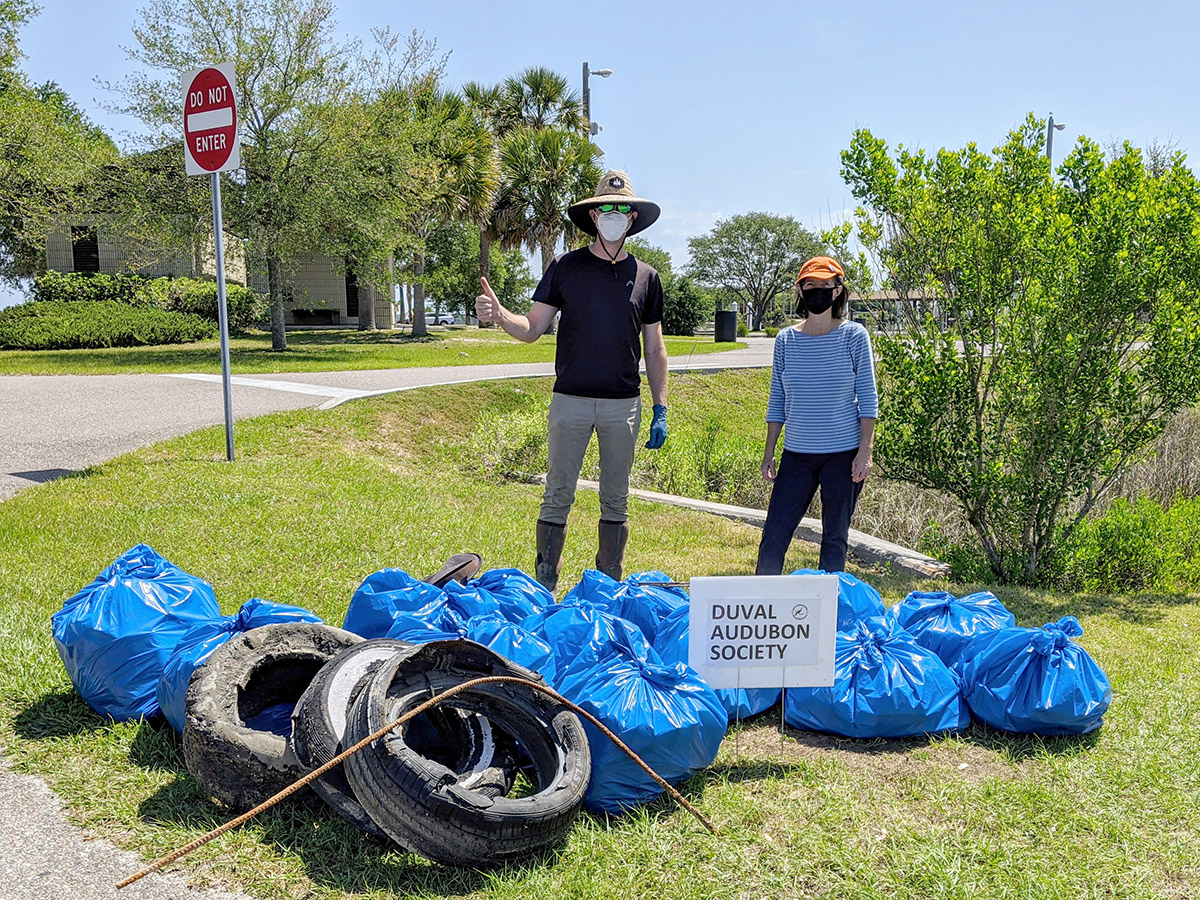 This month we are again hosting a cleanup at the wetlands along Heritage River Road (the road that leads to the Joe Carlucci Sisters Creek Park and Boat Ramp). This site is an eBird Hotspot where more than 170 bird species have been reported, including many shorebirds and wading birds, but it's in desperate need of a cleanup! Join us to help clean up this lovely spot and help keep trash from harming the wildlife we love. This month we are again hosting a cleanup at the wetlands along Heritage River Road (the road that leads to the Joe Carlucci Sisters Creek Park and Boat Ramp). This site is an eBird Hotspot where more than 170 bird species have been reported, including many shorebirds and wading birds, but it's in desperate need of a cleanup! Join us to help clean up this lovely spot and help keep trash from harming the wildlife we love.
We'll supply bags, gloves, and grabbers, we just need YOU and your help! Please wear close-toed shoes or boots, and clothes that can get dirty.
For your safety, no sandals or flip-flops, please!
What to bring:
- Water
- Sunglasses, hat
- Bug spray, sunscreen
- Heavy-duty gloves if you have them, and
- a waiver form signed by one of your parents if you are under 18. You may download it and bring it with you.
All participants must visit the Duval Audubon Society checkin table at the Joe Carlucci Sisters Creek Park to sign in and receive cleanup supplies. Please register on our Meetup site so we'll know how many to expect - we want to make sure we have enough supplies for everyone who wants to help. The cleanup will be from 8:30 to 11:30 am on Saturday, November 12, 2022; we hope to see you there!
UPCOMING ACTIVITIES
Here's what's happening this month:
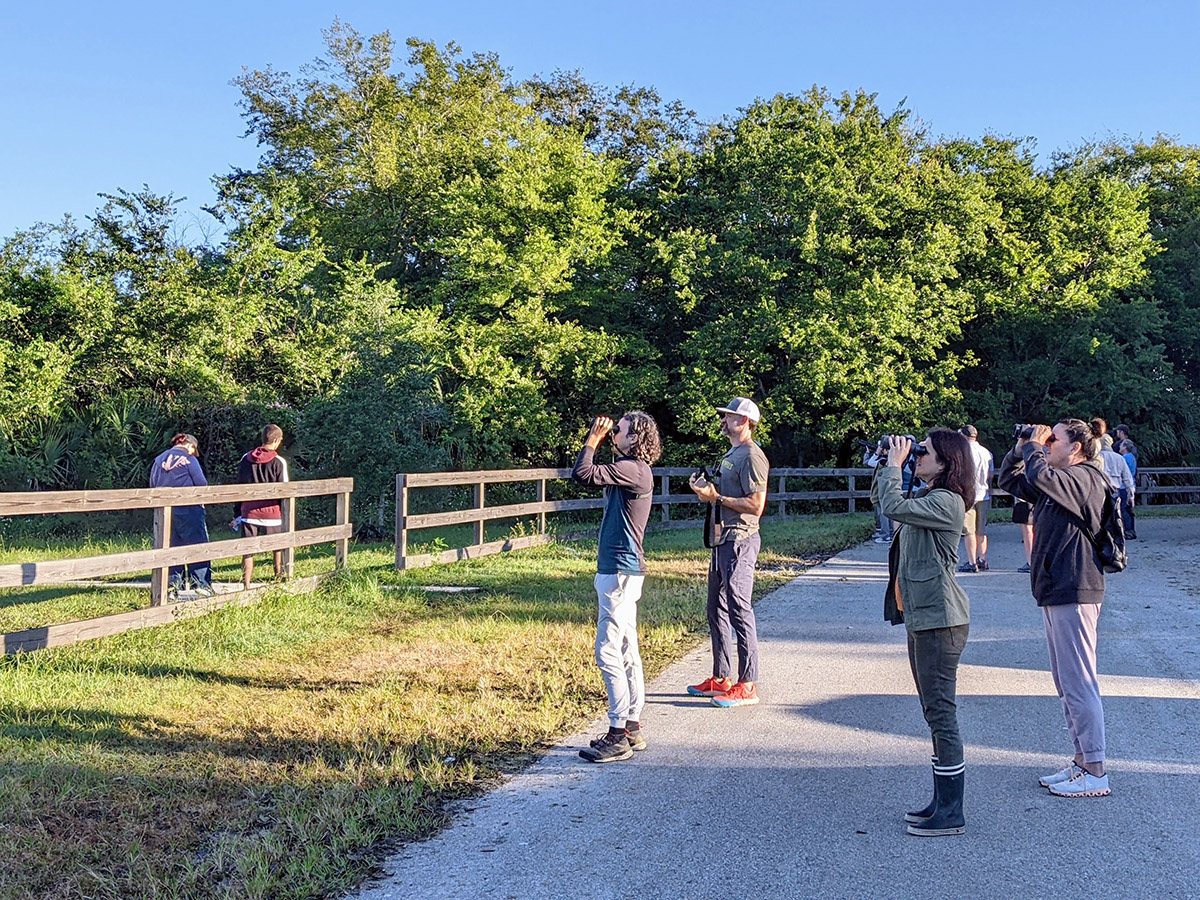 Project FeederWatch begins Tuesday, November 1, 2022 (learn more here) Project FeederWatch begins Tuesday, November 1, 2022 (learn more here)- Ixia Chapter of the Florida Native Plant Society Monthly Program @ The Garden Club of Jacksonville: "Florida's Fascinating Moths," featuring entomologist Marc C Minno, Ph.D.: 6-8 pm, Wednesday, November 2, 2022 (more info here)
- Field Trip @ Huguenot Memorial Park: 8-11 am, Saturday, November 5, 2022 (register here)
- Bird Walk for Beginners @ Fort Caroline National Memorial: 10 am - noon, Sunday, November 6, 2022 (register here)
- Fall Cleanup @ Joe Carlucci Sisters Creek Park and Boat Ramp: 8:30-11:30 am, Saturday, November 12, 2022 (register here)
- Bird Walk and Owl Prowl @ Kathryn Abbey Hanna Park: 3:30 -6:30 pm, Sunday, November 13, 2022 (hosted by Hanna Park; please contact them for info: 904-255-6767 or hannapark@coj.net)
- Nature Walk and Volunteer Work Day @ Crosby Sanctuary: 8 am - 12 pm, Saturday, November 19, 2022 (register here)
- Monthly Program (virtual meeting): "Ornitherapy: Not only fun, but also good for you!": 6:30-8 pm, Monday, November 21, 2022 (register here)
- Open House @ Crosby Sanctuary: 8 am - 12 pm, Saturday, November 26, 2022 (no registration needed)
We look forward to seeing you soon!
All content by Carol Bailey-White unless otherwise noted.
Duval Audubon Society, Inc.
P.O. Box 16304
Jacksonville, FL 32245
www.duvalaudubon.org
    
|
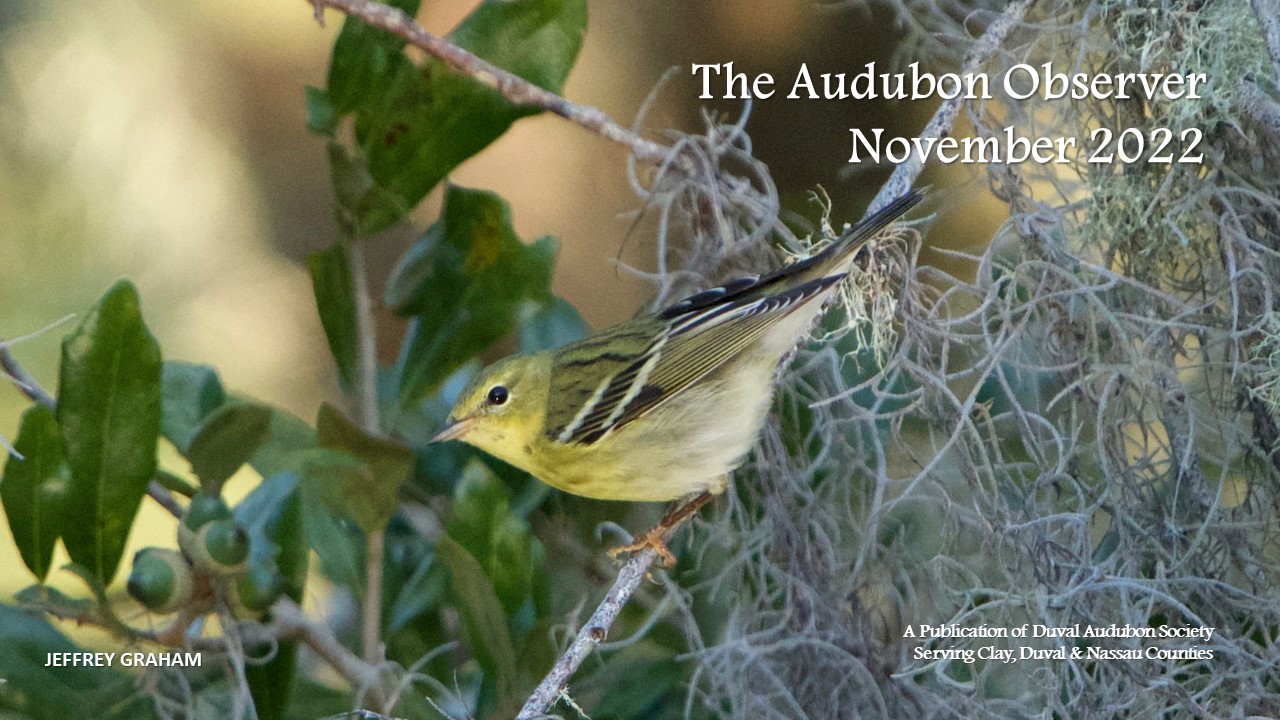
 We are thrilled to report a huge conservation win for birds and other wildlife in Northeast Florida! At the
We are thrilled to report a huge conservation win for birds and other wildlife in Northeast Florida! At the  And it’s not just entanglement. Seabirds often ingest plastic items
And it’s not just entanglement. Seabirds often ingest plastic items  Our
Our  The LONF project aims to encourage downtown business owners and building managers to reduce and turn off artificial lighting at night to ensure birds safe passage during their migration. So far this fall, LONF volunteers have tallied 150 dead birds and 25 birds injured or stunned by building collisions in the downtown Jacksonville area, and we hope that by reducing downtown lighting at night, fewer birds will be drawn into the downtown area and bird deaths and injuries will be significantly decreased in the future.
The LONF project aims to encourage downtown business owners and building managers to reduce and turn off artificial lighting at night to ensure birds safe passage during their migration. So far this fall, LONF volunteers have tallied 150 dead birds and 25 birds injured or stunned by building collisions in the downtown Jacksonville area, and we hope that by reducing downtown lighting at night, fewer birds will be drawn into the downtown area and bird deaths and injuries will be significantly decreased in the future.
 When it starts to feel like fall in Northeast Florida, Eastern Phoebes can’t be too far behind. This species typically starts arriving in our area in early October and stays through the end of March, when they start returning to their breeding territories across the northern part of the eastern US and Canada. They are categorized as a flycatcher species, with their diet primarily consisting of insects they catch in mid-air. It’s a delight to see an Eastern Phoebe perched on a branch and watch it quickly flying up and catching a meal, often returning to the same perch.
When it starts to feel like fall in Northeast Florida, Eastern Phoebes can’t be too far behind. This species typically starts arriving in our area in early October and stays through the end of March, when they start returning to their breeding territories across the northern part of the eastern US and Canada. They are categorized as a flycatcher species, with their diet primarily consisting of insects they catch in mid-air. It’s a delight to see an Eastern Phoebe perched on a branch and watch it quickly flying up and catching a meal, often returning to the same perch. This month we are again hosting a cleanup at the wetlands along Heritage River Road (the road that leads to the
This month we are again hosting a cleanup at the wetlands along Heritage River Road (the road that leads to the 